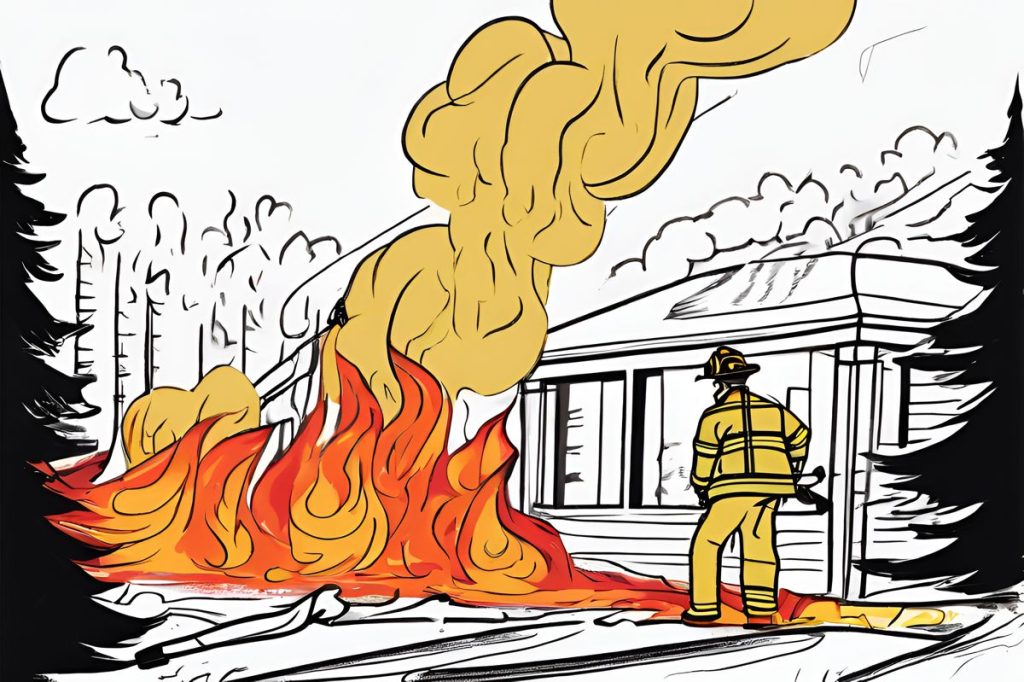The local fire brigade swiftly responded to 43 incidents in just 24 hours, successfully managing a major wildfire threatening the villages of Akaki and Deneia in the Nicosia district within four hours, showcasing their vital role in community safety. Andreas Kettis praised the tireless efforts of the first responders, highlighting the critical importance of well-prepared and proactive fire services in safeguarding our communities.
What did the local fire service accomplish in 24 hours?
The local fire brigade responded to 43 incidents in 24 hours, including 25 fire-related emergencies. Among these, they efficiently managed a major wildfire threatening two villages by deploying emergency units and equipment, controlling the fire within four hours. Their rapid response highlights the essential role of fire services in community safety.
A Day of Challenges
The local fire brigade has exhibited incredible dedication and efficiency, responding to a staggering 43 incidents in the span of just 24 hours. This remarkable feat of emergency management included tackling 25 fire-related emergencies, showcasing the critical role these men and women play in safeguarding our community. The spokesperson, Andreas Kettis, highlighted this achievement on Thursday via a social media post on platform X, drawing attention to the tireless efforts of our first responders.
Major Wildfire Aversion
Among these incidents, a significant wildfire demanded urgent attention, erupting at 1 pm on Wednesday. Situated perilously close to the villages of Akaki and Deneia within the Nicosia district, the fire spread across an expansive area of one square kilometre. This blaze did not only char dry grass and native wild vegetation but also inflicted damage on eucalyptus trees, a species known for its volatile oils that can exacerbate fire conditions. Furthermore, the fire’s reach extended to manmade structures, leading to the destruction of vital electricity poles and irrigation hoses, disrupting local utilities and agricultural operations.
Coordinated Suppression Efforts
In a coordinated response to this environmental crisis, the Fire Service acted swiftly, deploying a fleet of three fire trucks from nearby stations, alongside a unit from the forestry department equipped to manage wildfires. They were bolstered by two excavators, which are instrumental in creating firebreaks to contain such emergencies. Their combined efforts successfully brought the fire under control by 5 pm on the same day. The aftermath of the fire now transitions into a comprehensive investigation phase, conducted in collaboration with the police, to uncover the root cause and prevent future occurrences.
Proactive Measures and Public Safety
This series of events underscores the importance of a well-prepared and resourceful fire service, capable of managing multiple emergencies simultaneously. It also serves as a reminder for communities to adhere to fire safety guidelines, especially during dry seasons when the risk of wildfires increases. Establishments such as the electricity authority and agrarian sectors must also reassess their infrastructure to mitigate damage from future incidents. Through public awareness and continued support for our emergency services, we can strive towards a safer environment for all.
What did the local fire service accomplish in 24 hours?
The local fire brigade responded to 43 incidents in 24 hours, including 25 fire-related emergencies. Among these, they efficiently managed a major wildfire threatening two villages by deploying emergency units and equipment, controlling the fire within four hours. Their rapid response highlights the essential role of fire services in community safety.
How did the major wildfire impact the surrounding areas?
The major wildfire near Akaki and Deneia in the Nicosia district caused damage to dry grasslands, native vegetation, eucalyptus trees, and manmade structures like electricity poles and irrigation hoses. This disruption affected local utilities and agricultural operations, further emphasizing the importance of swift and effective fire suppression efforts.
What resources were deployed to combat the major wildfire?
The Fire Service deployed three fire trucks from nearby stations, a unit from the forestry department specialized in managing wildfires, and two excavators to create firebreaks. This coordinated effort, combining manpower and equipment, successfully brought the wildfire under control within four hours.
How can communities contribute to fire safety and prevention?
Communities can contribute to fire safety by adhering to fire safety guidelines, especially during dry seasons when the risk of wildfires is high. Additionally, establishments like the electricity authority and agrarian sectors should regularly assess their infrastructure to minimize damage from potential incidents. Public awareness and support for emergency services are crucial in creating a safer environment for all.

